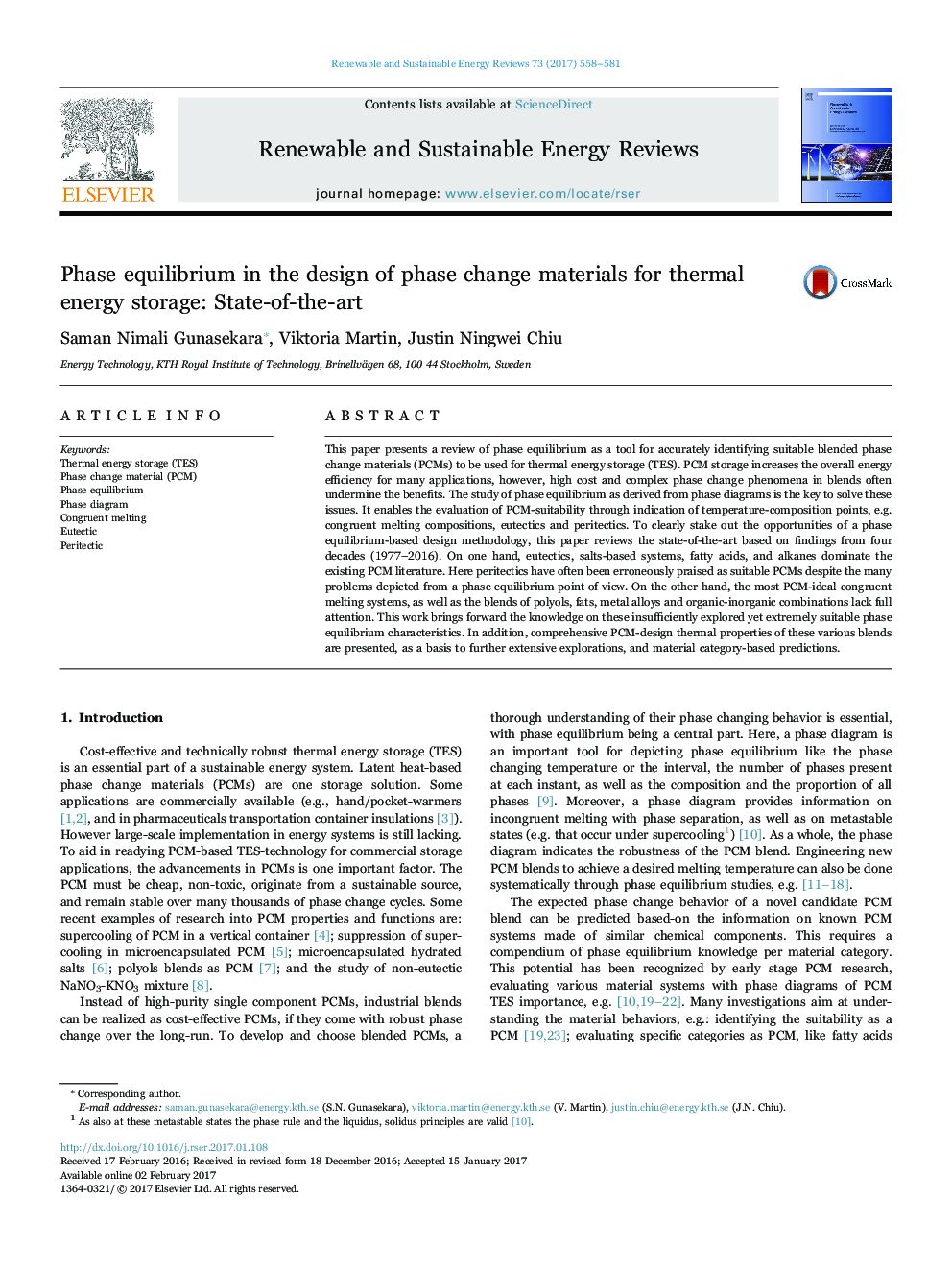| Article ID | Journal | Published Year | Pages | File Type |
|---|---|---|---|---|
| 5482284 | Renewable and Sustainable Energy Reviews | 2017 | 24 Pages |
Abstract
This paper presents a review of phase equilibrium as a tool for accurately identifying suitable blended phase change materials (PCMs) to be used for thermal energy storage (TES). PCM storage increases the overall energy efficiency for many applications, however, high cost and complex phase change phenomena in blends often undermine the benefits. The study of phase equilibrium as derived from phase diagrams is the key to solve these issues. It enables the evaluation of PCM-suitability through indication of temperature-composition points, e.g. congruent melting compositions, eutectics and peritectics. To clearly stake out the opportunities of a phase equilibrium-based design methodology, this paper reviews the state-of-the-art based on findings from four decades (1977-2016). On one hand, eutectics, salts-based systems, fatty acids, and alkanes dominate the existing PCM literature. Here peritectics have often been erroneously praised as suitable PCMs despite the many problems depicted from a phase equilibrium point of view. On the other hand, the most PCM-ideal congruent melting systems, as well as the blends of polyols, fats, metal alloys and organic-inorganic combinations lack full attention. This work brings forward the knowledge on these insufficiently explored yet extremely suitable phase equilibrium characteristics. In addition, comprehensive PCM-design thermal properties of these various blends are presented, as a basis to further extensive explorations, and material category-based predictions.
Keywords
Related Topics
Physical Sciences and Engineering
Energy
Renewable Energy, Sustainability and the Environment
Authors
Saman Nimali Gunasekara, Viktoria Martin, Justin Ningwei Chiu,
